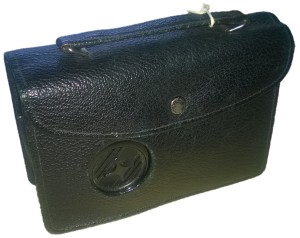George Booth was a connoisseur. As an avid collector of beautiful objects, he acquired decorative and fine art to adorn his home, Cranbrook House (and later, the various Cranbrook institutions). One of the most collected categories: metal objects.
He was, after all, descended from a line of copper and tinsmiths. At fifteen, George Booth started a two-year apprenticeship at the Red Foundry in St. Thomas, Ontario, where he learned the fundamentals of the millwright and blacksmithing trades. He expanded his interest in craftsmanship through investment into an ornamental ironworks firm in Windsor (Evans and Booth) soon thereafter.
While he sold his share of the iron business in 1888, Booth continued sketching designs for metal products throughout his life. They’re collected in his sketchbooks . Some of his sketches for gates, furniture, and decorative elements were realized by Samuel Yellin of Philadelphia, while others were completed by local forges, and some simply ideas.
In examining photographs of Cranbrook House from Booth’s lifetime, I’m struck by the careful arrangement of art objects, specifically art bronzes, in the space. In the image above, on the table sits Albin Polasek’s 1917 sculpture Woman with Moon, still on view in the house. (Click images to enlarge)
If you look at enough images of the house, you will realize Booth was constantly rearranging his collection. Here, Eli Harvey’s 1904 work Recumbent Lioness is on the mantelpiece.
Starting in 1915, Booth loaned decorative and fine artworks to the Detroit Institute of Arts, including many bronzes previously on display in his home. In 1919, he gifted ninety-six of these objects (in iron, ceramics, wood, silver, and bronze) to the DIA, where many are still on view. You can flip through the DIA’s 1919 Bulletin describing Booth’s gift (in text and images).
Once Booth began developing the Cranbrook campus, he spent less energy collecting for Cranbrook House. However, the house has on occasion welcomed contemporary design, like the 1950 competition for Cranbrook Academy of Art students for the design of Packard automobiles and hood ornaments.

Cranbrook Academy of Art students admiring designs for the Packard Motor Competition on display in the Cranbrook House Library, December 1950. Harvey Croze, Photographer. Courtesy of Cranbrook Archives.
Next week, students and alumni of the Academy’s Metalsmithing department will be gathering in Cranbrook House to show their work in the context of the Booth home in an exhibition organized by current students, A Line of Beauty: Cranbrook House Inhabitation. Taking their work out of the typical museum gallery setting (and off of the usual white pedestal) will provide a new framework in which to understand and view their pieces, and will also be a continuation of what George Booth did in his own lifetime: bring new art into the home to be placed among other items of beauty.
I mentioned that George Booth was a connoisseur. Curator and educator Charles Montgomery, who in the mid-twentieth century helped professionalize the genteel ideas of connoisseurship, wrote that the budding connoisseur must learn “to approach every object with an inquiring mind as well as with an inquiring eye.” He continued that “when first looking at an object, it is important to let oneself go and try to get a sensual reaction to it. I ask myself: Do I enjoy it? Does it automatically ring true? Does it sing to me?”
What I look forward to in the pop-up exhibition with the Metalsmithing department is not only the opportunity to see work from students and alumni, but also to view the many objects already in the house in a new light. Montgomery recommends looking at objects with half-closed eyes and from various angles, and next Friday night, I plan to do the same.

Ye Triumphe Ship, 1918 Henry Brundage Culver, with Untitled, 2017, Adam Shirley, CAA Metalsmithing 2010
A Line of Beauty: Cranbrook House Inhabitation will take place Friday, January 26th from 5:30 to 8:30pm. The presentation is curated and organized by the Cranbrook Academy of Art Metalsmithing Department, and is presented at Cranbrook House through the Cranbrook Center for Collections and Research. All are welcome.
– Kevin Adkisson, Collections Fellow, Cranbrook Center for Collections and Research
Editor’s Note: New works shown are by Adam Shirley, Alberte Tranberg, Natalia Sarrazin, and Iris Eichenberg.











